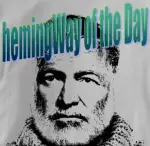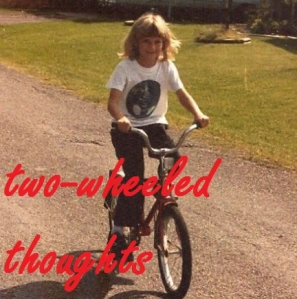I got to read and review a book recently, and interview its author, for a Maximum Shelf. That column won’t be out til maybe next month, and the book – Fruit of the Dead, by Rachel Lyon – not until March. But it sent me back to search out a book I hadn’t opened in years. Lyon’s is a retelling of the Demeter and Persephone myth, and so here I am with the “Hymn to Demeter” from my high school? or college? studies in Susan Shelmerdine’s Homeric Hymns. The bookmark in it was a flyer for my 20th birthday party, and it’s filled with marginal notes in my handwriting.
 I really appreciated having not only the hymn but Shelmerdine’s explanatory notes, in footnotes to the hymn itself but also in an introduction to the poem. Both sets of notes provide context in Greek mythology, and explain any places where the meaning may be unclear, or there may be subtext, or the text itself may be in question. As someone with some background in the myths but who’s rusty, I loved having those reminders.
I really appreciated having not only the hymn but Shelmerdine’s explanatory notes, in footnotes to the hymn itself but also in an introduction to the poem. Both sets of notes provide context in Greek mythology, and explain any places where the meaning may be unclear, or there may be subtext, or the text itself may be in question. As someone with some background in the myths but who’s rusty, I loved having those reminders.
For those who may also need some reminders, Demeter was the goddess of agriculture, who with Zeus had a beautiful daughter, Persephone. With Zeus’s help, Hades, god of the underworld, abducts Persephone to make her his bride. He takes her to the underworld, where Demeter can’t reach her beloved daughter; Demeter mourns, and the impact this has on agriculture means that humankind is in danger of starving. (The gods also lose, in terms of the sacrifices of grain they are owed by humans.) In response, Zeus and Hades make a deal that Persephone may return to her mother; but Hades is tricky and convinces (or forces?) Persephone (who, let us remember, is also a child – and his own niece – whom he has abducted and raped) to eat a pomegranate seed. (In various versions, this is three, or six, or seven seeds.) Because she has eaten in the underworld, she can only return to the land of gods and mortals for a part of the year, and must return to Hades for the other part. (Again, versions tell this variously as an even split of six months each way or of eight above and four below.) Persephone, goddess of the spring, is therefore closely linked to the harvest.
I think I find the tragedy of this story hits harder now that I’m a little older than when I first encountered it.
It’s story and it’s poetry, both lovely and strange, and I love placing it in the larger field of what I’ve learned about these myths from antiquity. It’s got me excited for Fruit all over again; look out for that review to come.
Filed under: book reviews | Tagged: classics, poetry | Leave a comment »















